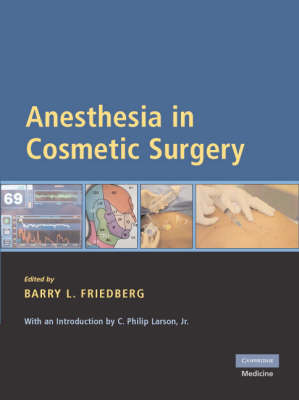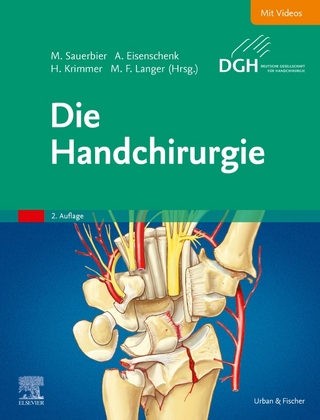
Anesthesia in Cosmetic Surgery
Cambridge University Press (Verlag)
978-0-521-87090-0 (ISBN)
One major by-product of the aging baby-boom generation has been a surging interest in cosmetic surgery. Out-patient cosmetic surgery clinics have sprouted up in droves all over the U.S., and the number of cosmetic procedures performed in 2005 increased by over 95% from the previous year. Although procedures like facelifts and abdominoplasties (the 'tummy-tuck') are considered minimally invasive, the anesthetic protocols and regimens here are often overly complex and unnecessarily toxic. Major complications involving anesthesia in this (and any other) surgical milieu can range from severe post-operative nausea and vomiting (PONV) to neuromuscular spasticity to mortality. The mortality spectrum of things may be rare, but there have been many cases in which perfectly healthy cosmetic surgery patients require emergency intervention due to a severe complication involving anesthesia. In recent years, many new anesthetic protocols have been developed to reduce the incidence of PONV and other complications, while ensuring that effective pain management and level of 'un-awareness' during surgery is always maintained.
Barry L. Friedberg, MD, is a volunteer assistant professor at the Keck School of Medicine, University of Southern California. Since 1992, he has practiced exclusively in the subspecialty of office-based anesthesia for elective cosmetic surgery. He founded the Society for Office Anesthesiologists (SOFA) in 1996 that he merged in 1998 with the Society for Office Based Anesthesia (SOBA), another non-profit, international society dedicated to improving patient safety through education. Dr Friedberg is the developer of propofol ketamine (PK) technique designed to maximize patient safety by minimizing the degree to which patients need to be medicated to create the illusion of general anesthesia, i.e. 'no hear, no feel, no recall.'
Part I. Minimally Invasive Anesthesia (MIA) for Minimally Invasive Surgery: Preface Adam F. Dorin; Introduction C. Philip Larson; Editor's notes Barry L. Friedberg; 1. Propofol ketamine with bispectral index (BIS) monitoring Barry L. Friedberg; 2. Preoperative instructions, intra-operative environment Barry L. Friedberg; 3. Level of consciousness monitoring Scott D. Kelley; 4. The dissociative effect and pre-emptive analgesia Barry L. Friedberg; 5. Special needs of cosmetic dental patients James A. Snyder; 6. PK in the UK, PK beyond cosmetic surgery Chris Pollock; 7. PK beyond cosmetic surgery: uses of PK MAC for mass casualty situations Joel McMasters; 8. Lidocaine toxicity Adam F. Dorin; 9. Local anesthetic blocks in head and neck surgery Joseph Niamtu; 10. Local anesthetics and surgical considerations for body contouring Roger Pielet; Part II. Alternative Anesthesia Approaches in Cosmetic Surgery: 11. Intravenous anesthesia for cosmetic surgery David Barinholtz; 12. Regional anesthesia for cosmetic surgery Susan Steele and Holly Evans; 13. General inhalation anesthesia for cosmetic surgery Meena Desai; Part III. Other Considerations for Anesthesia in Cosmetic Surgery: 14. Preanesthetic assessment of the cosmetic surgery patient Norm Levin; 15. The psychology of the cosmetic surgical patient David Sarwer; 16. The business of the office anesthesia Marc Koch; 17. The politics of office anesthesia David Barinholtz; 18. Staying out of trouble: the medicolegal perspective Ann Lofsky; Appendix A. A guide to perioperative nutrition David Rahm; Appendix B. Reflections on 30 years as a defense expert witness Norig Ellison.
| Erscheint lt. Verlag | 9.4.2007 |
|---|---|
| Zusatzinfo | 59 Tables, unspecified |
| Verlagsort | Cambridge |
| Sprache | englisch |
| Maße | 223 x 287 mm |
| Gewicht | 1032 g |
| Themenwelt | Medizin / Pharmazie ► Medizinische Fachgebiete ► Anästhesie |
| Medizinische Fachgebiete ► Chirurgie ► Ästhetische und Plastische Chirurgie | |
| ISBN-10 | 0-521-87090-9 / 0521870909 |
| ISBN-13 | 978-0-521-87090-0 / 9780521870900 |
| Zustand | Neuware |
| Haben Sie eine Frage zum Produkt? |
aus dem Bereich


